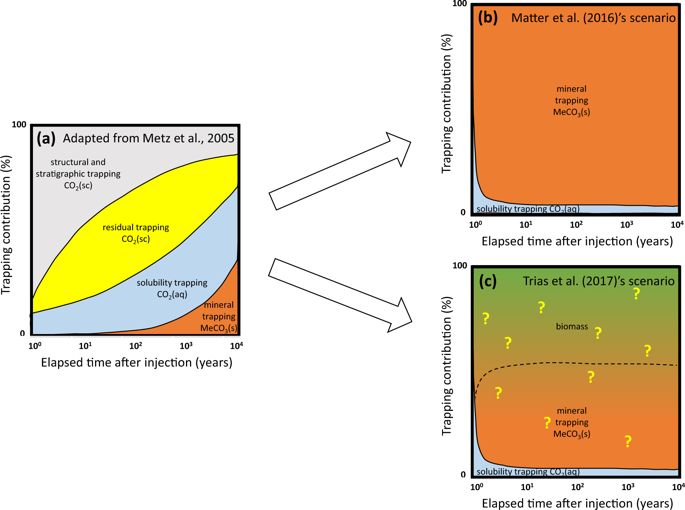npj Materials Degradation ( IF 6.6 ) Pub Date : 2018-04-04 , DOI: 10.1038/s41529-018-0035-4 Damien Daval

|
Turning carbon dioxide (CO2) into rocks: controlling this process, which naturally operates at the Earth’s surface over geological timescales, is likely to represent a major technological challenge of this century. One of the recurring criticisms with the carbonation reactions is their sluggishness, as it is commonly admitted that converting silicates into carbonates within geologic reservoirs may take up to several thousands of years, i.e., a duration which is hardly compatible with the goal of achieving net zero emissions by mid-century. Last year, a study that generated substantial interest suggested that after 2 years, more than 95% of the CO2 injected over the course of a pilot project of CO2 injection in lava flows in Iceland might have been mineralised into carbonates. While such results could have been considered as a green light for industrial applications, a new high-profile study based on the same pilot experiment tempered this idea, as it revealed unexpected modifications of deep ecosystems in response to CO2 injection, evidencing a bloom of chemolithoautotrophic bacteria, which have the ability to promote autotrophic C-fixation. Stated in other words, part of the CO2 that was initially thought to be mineralised under the form of stable carbonates might instead have been converted into (much more labile) biomass. Assessing the respective contributions of carbonates and biomass to the C-sequestration should therefore represent a prerequisite prior to large-scale carbon capture and storage through mineral carbonation, to make sure that the cure is not worse than the disease.
中文翻译:

通过硅酸盐降解和碳矿化来固存二氧化碳:前景和不确定性
将二氧化碳(CO 2)转化为岩石:控制此过程(在地质时间范围内自然在地球表面运行)可能代表了本世纪的主要技术挑战。关于碳酸化反应的反复批评之一是它们的迟钝性,因为通常认为在地质储层中将硅酸盐转化为碳酸盐可能需要长达数千年的时间,即与实现净零目标几乎不相容的持续时间。本世纪中叶的排放量。去年,一项引起广泛关注的研究表明,两年后,在CO 2试点项目的过程中,注入了超过95%的CO 2注入冰岛的熔岩流可能已经矿化成碳酸盐。虽然这样的结果可能被认为是工业应用的绿灯,但基于同一试验性实验的一项新的引人注目的研究改变了这一想法,因为它揭示了由于注入CO 2而对深层生态系统产生了意想不到的改变,证明了二氧化碳的大量涌入。化能自养细菌,具有促进自养C固定的能力。换句话说,CO 2的一部分最初被认为是以稳定碳酸盐形式矿化的有机物反而可能已转化为(更加不稳定的)生物质。因此,评估碳酸盐和生物质分别对碳封存的贡献应成为在通过矿物碳酸化进行大规模碳捕集和封存之前的先决条件,以确保治愈不会比疾病更糟。











































 京公网安备 11010802027423号
京公网安备 11010802027423号